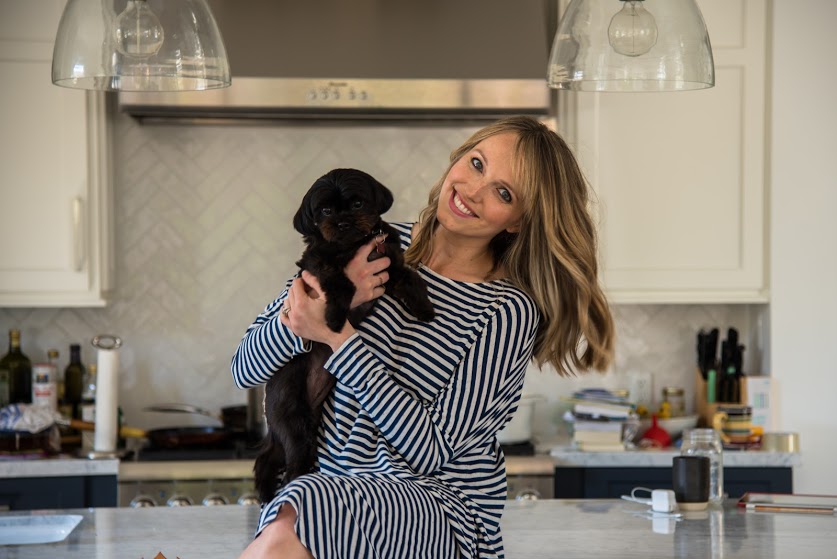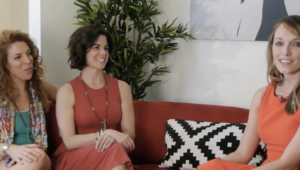Bringing Your Baby Home To Dog | Caitlin Wolfe of The Pasadena Humane Society
Outer

We love our dogs. They were our babies before babies. So how do we introduce our human baby to our fur baby? Caitlin Wolfe from The Pasadena Humane Society has some tips!:
1. Are there steps to take to prepare your dog before the baby arrives?
Yes. The change in routine is usually the most challenging adjustment for dogs (and all animals) when a new baby arrives. Be realistic about which parts of your routine may change and make preparations to get your dog acclimated beforehand. Begin varying the time they eat, walk, go to sleep, wake up, etc.
Decide if some of your dog’s current privileges– being allowed on the furniture, riding in the back seat of the car, laying in your lap–will change and make those changes before the baby comes.
Training is key! Take advantage of the time you have before the new baby arrives to freshen up on manners training. Enroll your dog in a group obedience class or begin working with a private trainer so you will have better communication with your dog.
Consider hiring a dog walker or enrolling your dog in a nearby doggie daycare so you have some resources to lean on when they need a break from the house or you will be gone longer than usual.
Decide if the baby’s room is going to be on or off limits for your dog. If it is going to be off limits, do not allow your dog in the room before the baby arrives. Invest in a sturdy baby gate so you don’t always have to close the door. If you decide to allow your dog in the baby’s room, make sure they have a “dog space” with a dog bed, blankets or a crate.
2. Is there a way to gage if Fido and baby will get along?
Your dog’s overall temperament is a good indicator of how they may do with the new baby. For example, if you have a young, excitable dog, they may be very eager to meet the new baby. You’ll want to keep your dog on leash and take them for a walk or run before meeting the little one. If your dog tends to be more fearful or timid, it’s important to move at the dog’s pace, by not forcing interaction until your dog is comfortable. Remember, it is okay if they don’t want to be around the baby right away.
3. What’s the best way to go about introducing your baby to your fur baby?
The initial interactions should be short and sweet. Try to stay calm and relaxed. Make sure your dog has time to release some energy before introductions. Have a helper close by and leash your dog as a safety precaution. Allow your dog to calmly approach you and the baby. Use plenty of tasty treats to reward your dog for nice behavior. If your dog gets overwhelmed and tries to jump or growl at the new baby, don’t punish them. You always want your dog to see the new baby as a good thing. It’s best to remove your pup from the baby’s room and give them space until they are more comfortable or they have had time to relax.
4. If the dog isn’t reacting well, what are some ways to help get them on board?
Keep your dog and the new baby separate and start with small positive interactions–going on a walk with the baby in the stroller, praising your dog anytime they react to the baby in a positive way. Don’t hesitate to contact a reward-based dog trainer when you have concerns about your dog’s reactions to the new baby. Safety first!
5. Are there any health and/or safety precautions to take with your dog and the baby interacting?
For most babies and young children, being around a dog or another pet does not pose additional health risks. When introduced early a pet can actually strengthen a child’s immune system and they may have less of a risk of developing pet-related allergies later in life.
6. How can you be sure your pup is still getting enough love with this new center of attention?
Decide on a routine and do your best to stick with it. Take advantage of the time baby is sleeping to spend time with your dog.
7. What is important to look for when adopting a dog to bring into a home with a new baby?
Ideally, you would look for a dog that has been around babies and children in the past. However, in many cases the dog’s history is unknown, so you must rely on general temperament. A dog that appears confident and secure, as opposed to fearful or shy, may adapt to big changes more smoothly. Also keep in mind that a high energy dog, maybe be too rough or active for a baby.
If you are looking to adopt a puppy, remember that puppies also require a large time commitment. Make sure you are ready and have the time and resources to devote to puppy training, exercise, and socialization.
Looking to adopt? – http://pasadenahumane.org/adopt/



COMMENTS : 0